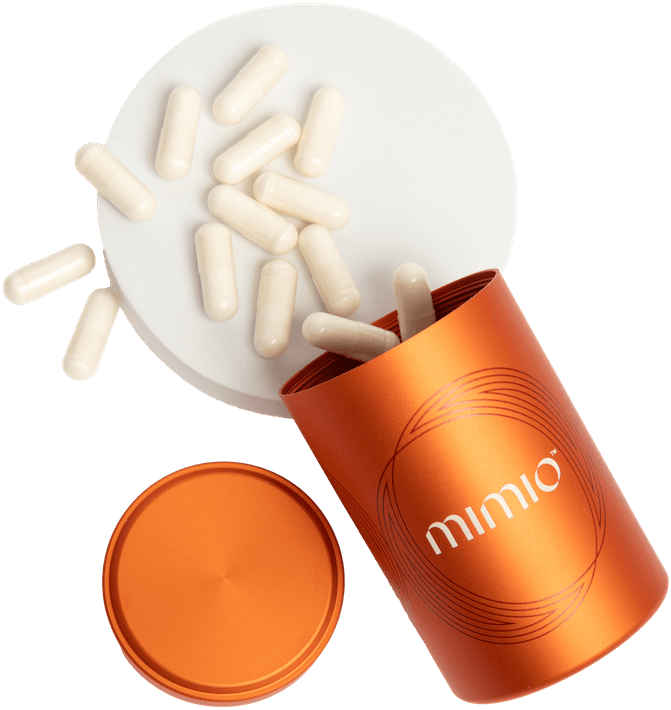PEA is a fatty acid amide derivative of palmitic acid originally isolated from soybeans and is involved in neuronal and nerve regulation through its activity as a nuclear factor agonist3. PEA is common in the food stream, but found primarily in legumes including soybean, peanuts, peas, and black-eyed peas. Since its discovery in 1957, PEA has been widely used as an anti-inflammatory and analgesic for its well-documented ability to alleviate pain via actions on the immune system, neuronal cells, and the endocannabinoid system3,18–22. PEA is also documented to have potential benefits in treating neurodegenerative and CNS disorders3 such as Alzheimer’s disease23, depression24, and fibromyalgia25. Similar to spermidine and 1-MNA, PEA has also been shown to have lifespan extending effects and increase survival through anti-inflammatory effects in mouse models26. Due to its actions as a natural endocannabinoid, PEA has recently been popularized as a natural CBD alternative for elite athletes and has been shown to have multiple performance enhancing clinical effects including increased focus and improved muscle recovery and has been show to decrease gut leakage and intestinal permeability. While there is no current recommendation for PEA intake, it has undergone numerous large-scale clinical trials that have determined PEA’s tolerability at dosages as high as 1200mg/day18,22 and its supplementation may have beneficial effects in treating multiple disorders and conditions relating to pain, inflammation, and neuroprotection3,20–22.
References
3. Mattace Raso, G., Russo, R., Calignano, A. & Meli, R. Palmitoylethanolamide in CNS health and disease. Pharmacological Research (2014)
18. Gabrielsson, L., Mattsson, S. & Fowler, C. J. Palmitoylethanolamide for the treatment of pain: pharmacokinetics, safety and efficacy. British Journal of Clinical Pharmacology (2016) doi:10.1111/bcp.13020.
19. Gabrielsson, L., Gouveia-Figueira, S., Häggström, J., Alhouayek, M. & Fowler, C. J. The anti-inflammatory compound palmitoylethanolamide inhibits prostaglandin and hydroxyeicosatetraenoic acid production by a macrophage cell line. Pharmacol. Res. Perspect. (2017) doi:10.1002/prp2.300.
20. Alhouayek, M. & Muccioli, G. G. Harnessing the anti-inflammatory potential of palmitoylethanolamide. Drug Discovery Today (2014) doi:10.1016/j.drudis.2014.06.007.
21. Artukoglu, B. B., Beyer, C., Zuloff-Shani, A., Brener, E. & Bloch, M. H. Efficacy of palmitoylethanolamide for pain: A meta-analysis. Pain Physician (2017).
22. Petrosino, S. & Di Marzo, V. The pharmacology of palmitoylethanolamide and first data on the therapeutic efficacy of some of its new formulations. British Journal of Pharmacology (2017) doi:10.1111/bph.13580.
23. Beggiato, S., Tomasini, M. C. & Ferraro, L. Palmitoylethanolamide (PEA) as a potential therapeutic agent in Alzheimer’s disease. Frontiers in Pharmacology (2019) doi:10.3389/fphar.2019.00821.
24. Coppola, M. & Mondola, R. Is there a role for palmitoylethanolamide in the treatment of depression? Med. Hypotheses (2014) doi:10.1016/j.mehy.2013.12.016.
25. Schweiger, V. et al. Ultramicronized Palmitoylethanolamide (um-PEA) as Add-on Treatment in Fibromyalgia Syndrome (FMS): Retrospective Observational Study on 407 Patients. CNS Neurol. Disord. - Drug Targets (2019) doi:10.2174/1871527318666190227205359.
26. Heide, E. C. et al. Prophylactic palmitoylethanolamide prolongs survival and decreases detrimental inflammation in aged mice with bacterial meningitis. Front. Immunol. (2018) doi:10.3389/fimmu.2018.02671.



